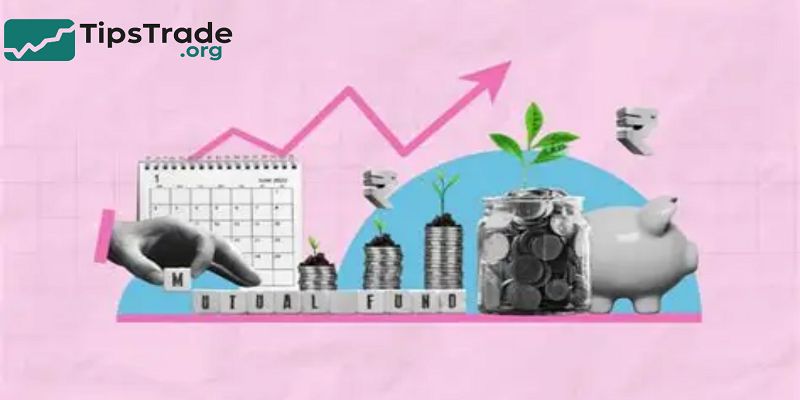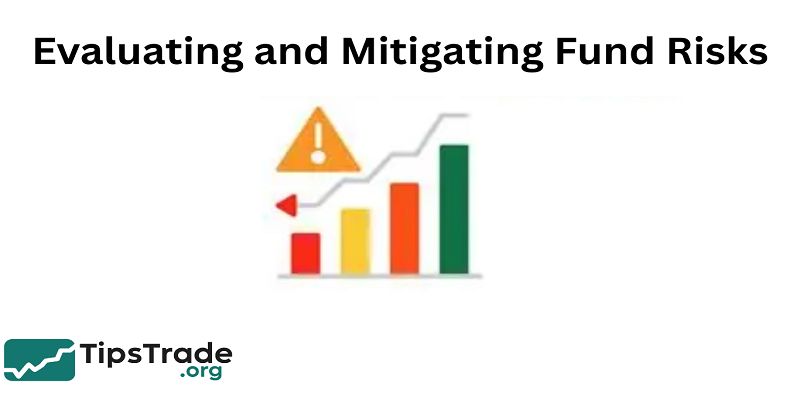Risks of Investing in Funds are an important consideration for any investor looking to grow their wealth. Understanding these risks helps investors make informed decisions and prepare for potential market fluctuations. Funds can offer diversification, but they are not without challenges such as market volatility, management risks, and fees that could impact returns. Visit tipstrade.org and check out the article below for further information
Understanding Fund Investment Risks

What Are Fund Investment Risks?
Fund investment risks refer to the potential for losing money or experiencing returns below expectations.
Every fund, whether equity, bond, or mixed, carries varying degrees of risk influenced by market fluctuations, interest rates, and economic conditions.
For instance, during the 2008 financial crisis, many equity funds saw declines exceeding 30%, demonstrating the exposure inherent in pooled investments.
Investors should consider both absolute risk (loss of capital) and relative risk (underperforming benchmarks). Understanding these risks is the first step toward building a resilient investment strategy.
Research from Morningstar and SEC filings provides objective measures of historical fund volatility and can guide decision-making.
Key Risk Types in Funds

Funds face multiple categories of risk:
- Market Risk: Losses due to overall market declines.
- Credit Risk: Default risk in bond holdings.
- Liquidity Risk: Difficulty selling assets without affecting price.
- Inflation Risk: Returns may not keep pace with inflation, reducing purchasing power.
- Regulatory Risk: Legal or policy changes impacting fund operations. Recognizing these risks helps investors tailor fund selection to personal risk tolerance, investment horizon, and financial goals.
How Risks Differ Between Mutual Funds, ETFs, and Index Funds
- Mutual funds rely on active management, introducing manager-driven risks, including underperformance relative to benchmarks.
- ETFs offer cost-effective exposure but carry market-trading risks, especially in volatile markets.
- Index funds passively track benchmarks, providing stable, broad-market exposure but limited potential to outperform.
- Each fund type’s risk profile depends on investment strategy, sector focus, and market conditions, making careful evaluation essential before investing.
Market and Economic Risks
Volatility and Market Fluctuations
- Market volatility can cause significant fluctuations in fund NAVs, affecting short-term performance.
- Equity funds are particularly sensitive to daily market swings, while bond funds are impacted by interest rate changes.
- Tools like the VIX index and standard deviation provide insights into expected volatility.
- Historical data shows that diversified equity funds can experience declines of 15–20% during turbulent periods, underscoring the importance of risk assessment and long-term planning.
Impact of Economic Downturns
- Economic recessions or slowdowns influence corporate earnings, interest rates, and investor sentiment, directly impacting fund performance.
- For example, during the 2020 COVID-19 pandemic, global equity funds experienced rapid declines, with some recovering slowly over months.
- Understanding how macroeconomic trends affect fund categories allows investors to adjust allocations and manage exposure effectively.
Sector-Specific Risks
- Funds concentrated in specific sectors, such as technology, energy, or healthcare, carry unique risks.
- Oil price drops may heavily affect energy-focused funds, while regulatory changes can impact healthcare investments.
- Sector-specific risk highlights the need for diversification to avoid concentrated losses and maintain balanced portfolio exposure.
Management and Strategy Risks

Active vs. Passive Management Risks
- Active funds depend on manager expertise, creating potential for underperformance due to poor decisions or market misjudgment.
- Passive funds, while cheaper and simpler, are exposed to market risk and cannot outperform benchmarks.
- Investors must weigh trade-offs between active oversight and cost-efficiency when selecting fund types.
Fund Manager Decisions and Performance
- Managers’ decisions regarding asset allocation, sector weighting, and stock selection directly impact returns.
- Poor decisions or frequent strategy changes can lead to inconsistent performance.
- For instance, Morningstar analysis shows that top-performing active funds frequently underperform in volatile markets, emphasizing the importance of evaluating manager track records and consistency.
Risks of Style Drift or Strategy Changes
- Style drift occurs when a fund shifts from its stated investment strategy, potentially increasing risk for investors expecting a specific focus.
- For example, a growth-oriented fund may adopt value stocks, altering risk-return characteristics.
- Monitoring fund reports and holdings helps investors detect such deviations and maintain alignment with goals.
Liquidity and Redemption Risks

Understanding Liquidity in Funds
- Liquidity refers to the ease of buying or selling fund shares without affecting price.
- Equity ETFs generally offer high liquidity, while real estate or small-cap funds may face liquidity constraints.
- Limited liquidity can delay redemptions and affect pricing, impacting short-term investors or those needing quick access to capital.
Redemption Pressures During Market Stress
- Mass redemptions during market downturns force funds to sell assets quickly, potentially at unfavorable prices.
- This can reduce NAV and affect remaining investors. Funds with diversified liquid holdings manage this risk better than concentrated, illiquid funds.
Impact on Fund Performance
- Liquidity constraints and redemption pressures can amplify losses during crises.
- Investors must consider fund liquidity, redemption terms, and potential lock-up periods when assessing risk exposure.
Fees and Expense-Related Risks
Expense Ratios and Their Effect on Returns
- High fees reduce net returns, especially in low-growth environments.
- For example, a 1.5% annual expense ratio on a fund yielding 6% reduces investor net return to 4.5%, compounding over time.
- Comparing expense ratios across funds helps investors balance costs with expected performance.
Hidden Fees and Load Charges
- Some funds include front-end loads, back-end loads, or transfer fees. Hidden charges can erode returns unexpectedly.
- Investors should read fund prospectuses carefully and calculate the total cost of investment before committing capital.
High-Fee Funds vs. Low-Cost Funds
- Actively managed funds typically charge more than passive or index funds.
- High fees may only be justified if the fund consistently outperforms benchmarks.
- Evidence suggests that many high-fee funds fail to beat low-cost index funds over long-term horizons.
Regulatory and External Risks
Regulatory Changes Affecting Funds
- Changes in investment regulations, tax laws, or reporting requirements can influence fund strategies and returns.
- For example, new ESG disclosure rules may affect fund composition and marketing.
Political and Geopolitical Risks
- Political instability, trade tensions, or sanctions can impact international funds.
- Emerging market ETFs are particularly sensitive to geopolitical developments, affecting asset value and liquidity.
Currency and Foreign Market Risks
- Funds investing abroad face exchange rate risk. A depreciating foreign currency can reduce investor returns, even if the underlying investments perform well.
- Hedging strategies may mitigate some, but not all, of these risks.
Evaluating and Mitigating Fund Risks

Diversification Strategies
- Spreading investments across asset classes, sectors, and geographies reduces overall portfolio risk.
- A well-diversified fund can withstand sector downturns and market volatility more effectively.
Understanding Fund Holdings
- Analyzing fund holdings allows investors to assess exposure to high-risk sectors or companies.
- Transparency in holdings ensures informed decisions and alignment with risk tolerance.
Risk Metrics (Standard Deviation, Beta, Sharpe Ratio)
- Standard Deviation: Measures volatility.
- Beta: Assesses sensitivity to market swings.
- Sharpe Ratio: Evaluates risk-adjusted return. These metrics help compare funds and quantify potential risk objectively.
Stress Testing and Scenario Analysis
- Modeling potential adverse market conditions provides insight into how funds might perform under stress.
- Scenario analysis can reveal hidden vulnerabilities not obvious from historical performance.
Using Fund Ratings and Independent Research
- Morningstar, Lipper, and MSCI ratings offer independent assessments of risk, performance, and ESG integration.
- Relying on these credible sources adds objectivity to investment decisions.
Conclusion
Risks of Investing in Funds must be carefully evaluated before committing capital. While funds provide opportunities for growth and diversification, investors should remain aware of the uncertainties and fees involved. Being informed about these risks enables better planning and risk management to protect investments over time.

